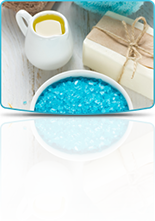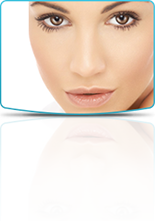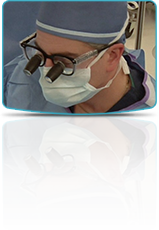Category Archives: Chemical Peels
How Often Should You Get a Chemical Peel?
- Saturday, 15 March 2025 12:00
- Kim
- 0 Comments
 Chemical peels are a powerful way to rejuvenate your skin, improve texture, and target concerns like acne, fine lines, and hyperpigmentation. However, the frequency of treatments depends on factors such as skin type, the type of peel used, and your skincare goals.
Chemical peels are a powerful way to rejuvenate your skin, improve texture, and target concerns like acne, fine lines, and hyperpigmentation. However, the frequency of treatments depends on factors such as skin type, the type of peel used, and your skincare goals.
At Keystone Cosmetic Surgery Center, Dr. Robert M. Kimmel and his expert team offer advanced chemical peel treatments in a state-of-the-art, nationally accredited facility, ensuring safe and effective skin rejuvenation. With over 15 years of cosmetic experience, Dr. Kimmel provides personalized care, helping patients achieve radiant, youthful skin with professional, non-invasive treatments.
Here’s a guide for determining your peel treatment plan. Consult with a professional for more personalized information.
Types of Chemical Peels and Their Recommended Frequency
Not all chemical peels are the same. The strength of the peel plays a key role in determining how often you should schedule treatments.
- Light (Superficial) Peels – These peels, often made with glycolic or lactic acid, are gentle and require little to no downtime. They exfoliate the outermost layer of skin and can be done every two to four weeks for ongoing maintenance.
- Medium Peels – Peels containing trichloroacetic acid (TCA) or a higher concentration of glycolic acid penetrate deeper into the skin. They are ideal for treating sun damage, fine lines, and moderate discoloration. These should be every three to six months to allow proper healing.
- Deep Peels – The most intensive option, deep peels use strong acids like phenol to penetrate multiple layers of skin. They are effective for severe wrinkles and scarring but require significant downtime. Most people only need one deep peel in a lifetime or, at most, every several years.
Factors That Influence Frequency
Your skin type, concerns, and how your skin reacts to treatments all play a role in how often you should get a chemical peel. Those with sensitive skin may need more time between treatments, while those targeting acne or pigmentation may benefit from a more frequent schedule.
Get Flawless, Rejuvenated Skin with a Chemical Peel in Pottsville, PA
For the best results, consult a professional to determine your skin type’s ideal peel and frequency. Following a proper post-peel skincare routine, including hydration and sun protection, will help maintain the benefits of your treatment.
Would you like a personalized recommendation? Call us today at 570-622-2900 to schedule a consultation and create the best chemical peel plan for you!
New Year, New Peel: Understanding Chemical Peels In Pennsylvania
- Sunday, 15 January 2023 12:35
- Kim
- 0 Comments
 Happy New Year! Wouldn’t it be great to look better with a cosmetic procedure? Look no further than a chemical peel! A chemical peel improves the look of skin on the face, neck, or hands. As a result of applying a chemical solution, the skin becomes irritated, blisters, and eventually peels off. The new skin usually appears smoother and less wrinkled.
Happy New Year! Wouldn’t it be great to look better with a cosmetic procedure? Look no further than a chemical peel! A chemical peel improves the look of skin on the face, neck, or hands. As a result of applying a chemical solution, the skin becomes irritated, blisters, and eventually peels off. The new skin usually appears smoother and less wrinkled.
Different types of chemical peels are available, and the type you receive will depend on your desired results. The alpha hydroxy acid (AHA) peel is the most common peel, designed to treat wrinkles, sun damage, and acne.
If you’re considering a chemical peel, you’ve come to the right place! In this article, we’ll give you everything you need to know about chemical peels – from the types of peels available to the risks and side effects associated with the procedure.
What Are the Different Types of Chemical Peels?
Chemical peels fall into three main categories:
- Superficial peels
- Medium peels
- Deep peels
Superficial peels are the most common peel and are often referred to as “lunchtime peels” because they take place in as little as 30 minutes. They can treat fine wrinkles, sun damage, and mild acne.
Medium peels help treat wrinkles, sun damage, and moderate acne. They penetrate the skin deeper than superficial peels and often require anesthesia. Medium peels can cause some redness and swelling, usually taking 7-10 days to heal.
Deep peels are the most aggressive peel to treat deep wrinkles, severe sun damage, and advanced acne. They penetrate the skin deeply and often require anesthesia. Deep peels can cause extensive redness and swelling, taking 14-21 days to heal.
Can I Go in the Sun After Getting a Chemical Peel?
After a chemical peel, it is crucial to avoid sun exposure as much as possible. If you must go out in the sun, wear sunscreen with an SPF of 30 or higher.
Contact Us for a Consultation
Want to look your best in the New Year? Let’s talk soon! Keystone Cosmetic Surgery Center offers chemical and other procedures to make you feel and look great! Contact our Pottsville office at 570-622-2900 or our Hazleton office at 570-455-4252.





